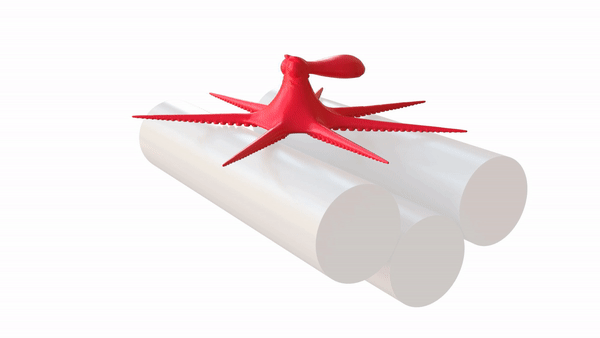Ted Kim Wins Academy Award for Animation Innovation

Computer animation has advanced rapidly in recent years, and Theodore Kim has had a lot to do with that. As a result, the computer science professor will receive his second Academy Award.
Much of the work that goes into computer animation involves making the sort of things we never think about - flopping down on a couch, unfurling a bedsheet - look realistic. It turns out that this takes a lot of work. Kim has turned countless whiteboards of tricky math and an enormous amount of trial and error into some of the most iconic movie images of the last two decades.
 Later this month, Kim will receive a Technical Achievement Award from the Academy of Motion Picture Arts and Sciences. Unlike the other Oscars, the Technical Achievement Award is among those that are announced before the main ceremony. Kim and his family will fly out to Los Angeles to receive the award.
Later this month, Kim will receive a Technical Achievement Award from the Academy of Motion Picture Arts and Sciences. Unlike the other Oscars, the Technical Achievement Award is among those that are announced before the main ceremony. Kim and his family will fly out to Los Angeles to receive the award.
The award is for a program he co-developed called Fizt2 (pronounced “fizz-tea-too”), which he describes as “a simulator for all things soft and squishy.” When it comes to depicting things like muscle, flesh, and cloth, Fizt2 makes sure that the laws of physics are followed to make things look natural. That is, until the animators want things to look more exaggerated, as animators often do. Previously, animators had very basic methods for working with soft materials, and if everything wasn’t done just right, things could go wrong very quickly. Fizt2 builds off an earlier program, Fizt, which was Pixar’s original cloth simulator and was first used to animate the shirt of the character Boo in “Monsters Inc.”
“It was a breakthrough at the time, but movies get more sophisticated every year,” Kim said. For instance, the program couldn’t take on complicated tasks like animating multiple layers of cloth. That’s where Fizt2 comes in, which Kim created along with his fellow Academy Award honorees David Eberle, Audrey Wong and Fernando de Goes.
“We went back, revisited the basic physics, and built fast, exact new ways of computing the core math,” he said. “When we did that, we found some elegant new equations that had been hiding deep inside the math this entire time. It sped things up and made everything more stable.”
It was first used in Cars 3 (2017), when one of the characters’ tires gets hyperinflated. Kim notes that audiences often think that action scenes and huge explosions require the most work, but it’s really the subtler visuals that pose the greatest challenges. He points to a song-and-dance scene in Coco (2017) as an example. A giant bell that crushes the singer Ernesto de la Cruz to death is the attention-getter, but great animation is all about the details. The really tricky work is in the flamenco dancers’ flowing skirts in the background. Kim’s technology made that possible.
You can also see it deployed in the pull string of the cowboy Woody in Toy Story 4 (2019). More recently, it was used in Turning Red (2022), an Oscar nominee this year for best animated feature. Woody’s buddy, Buzz Lightyear, also benefitted from the program in Lightyear (2022). In that case, the simulator was used to ensure that Buzz’s body and his spacesuit moved together properly. In the real world, we wear our clothes and move around, but don’t think too much about it. When animating those same things, surprising challenges arise.
“The big deal is actually armpits,” Kim said. “With armpits, if you don't simulate the body, there's a non-physical pinch that happens - the arm actually passes into the torso. Then, when you try to put clothing over it, it doesn't work. So you have to simulate the body, too.”
With this second Academy Award, Kim joins an elite group of multiple Academy Award winners. He won his first in 2012 for devising Wavelet Turbulence, a program that makes it much easier to create realistic explosions and fires. It’s been used in Avatar (2009), The Amazing Spider-Man (2012) and dozens of other movies. Its usefulness goes well beyond Hollywood: medical researchers can apply it to studying the turbulence of blood flow, for instance, or it can help the aerospace industry better understand air turbulence in their design of airplanes.
Kim’s work made its first blockbuster appearance in 2001 with the animated Sorting Hat in Harry Potter and the Sorcerer's Stone, and before coming to Yale in 2019, he was a senior research scientist at Pixar. With a strong belief that everyone should benefit from scientific advancements, Kim and his colleagues have regularly published their work at conferences and in journals. As a result, the technology ends up being used widely in films.
“We’re in the business of making movies, but we’re also movie fans,” he said. “If we can make other people’s movies better by sharing the technology, we directly benefit. Then I get to see those movies!”

